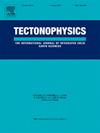The Dense Oceanfloor Network System for Earthquakes and Tsunamis (DONET) and the Long Term Borehole Monitoring System (LTBMS), installed above the source region of the 1944 Tonankai earthquake, revealed that crustal deformation is driven by slow slip events (SSEs) in the shallower extension of megathrust earthquakes. However, there are unresolved questions about (A) the duration of the SSE in February 2012, which was longer than expected for SSEs with similar magnitudes, and (B) the relationship of the spatial distribution of fault slip between the SSEs in February and December 2012 under the condition of drilling disturbance. To clarify these questions, we re-analyzed the pore/seafloor pressure data associated with the SSEs. Our refined fault models show that the SSE in February had a significantly slower propagation speed and a longer duration than others, while the SSE in December was comparable to others. We interpret that the difference in duration and propagation speed is related to external and internal stress perturbations, respectively. Using the ocean modeling JCOPE (Japan Coastal Ocean Predictability Experiment), we identified that the decrease and subsequent increase in seafloor pressure due to the passage of the Kuroshio meander coincided with the latter part of the longer duration of the SSE in February and its termination, respectively. This suggests that the Kuroshio meander might affect the duration of SSEs. Our refined fault model also indicates that the amount of shear stress accumulation was small before the occurrence of the SSE in February, which triggered the slow propagation of aseismic slip based on a rate- and state-dependent friction law. These results imply that we need to consider the variety of SSEs from the viewpoint of stress perturbation due to not only interaction between fault segments but also external forces from oceanographic phenomena.



